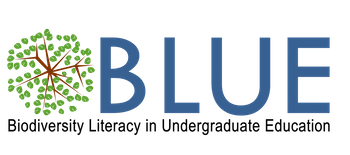Connecting Students to Citizen Science and Curated Collections
Author(s): Anna Monfils1, Erica Krimmel2, Debra Linton1, Travis Marsico3, Ashley Morris4, Brad Ruhfel5
1. Central Michigan University 2. iDigBio, Florida State University 3. Arkansas State University 4. Middle Tennessee State University 5. University of Michigan
2999 total view(s), 2625 download(s)
CollectionsEducation.org.docx(DOCX | 1 MB)
- Connecting Students to Citizen Science and Curated Collections
Appendix-A.docx(DOCX | 8 KB)
Appendix-A.pdf(PDF | 61 KB)
Appendix-B.docx(DOCX | 9 KB)
Appendix-B.pdf(PDF | 51 KB)
Appendix-C.docx(DOCX | 9 KB)
Appendix-C.pdf(PDF | 33 KB)
Appendix-D.docx(DOCX | 7 KB)
Appendix-D.pdf(PDF | 76 KB)
Appendix-E.pdf(PDF | 477 KB)
Appendix-F.pdf(PDF | 41 KB)
cscsccmailmergetemplate_2015-08-24.docx(DOCX | 25 KB)
rubric_for_collections_spring2016.docx(DOCX | 45 KB)
- License terms
Description
This plant collection project includes the traditional field collection protocols and integrates these methods into a collection workflow designed to minimize legacy data. The materials and exercise emphasize current best practices both in botanical collecting and in specimen data management. Students following this workflow are exposed to biodiversity data literacy concepts organically, and learn best practices through application.
The learning objectives for the collection project are that students will be able to:
- Maintain a professional specimen collection notebook.
- Collect plant specimens from the field using proper techniques and including adequate material for identification.
- Identify unknown plant specimens using multiple forms of reliable evidence.
- Prepare and deposit research quality herbarium specimens.
- Deposit species and occurrence data into national/international databases.
- Explain the importance of herbaria in plant biology research.
- Discuss the value of large data sets for investigating large spatial- or temporal- scale phenomena. (invasive species, rare species, climate change, etc.)
- Evaluate the importance of citizen scientists to large data sets.
Cite this work
Researchers should cite this work as follows:
- Monfils, A., Krimmel, E., Linton, D., Marsico, T., Morris, A., Ruhfel, B. (2019). Connecting Students to Citizen Science and Curated Collections. Biodiversity Literacy in Undergraduate Education, QUBES Educational Resources. doi:10.25334/Q4DN0M
